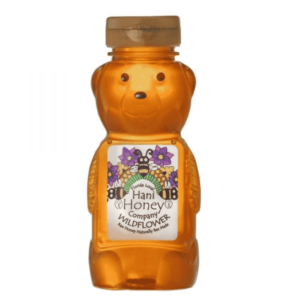Peppers are a versatile and vibrant addition to any garden and kitchen. Whether you prefer sweet bell peppers, spicy jalapeños, or colorful habaneros, growing your own peppers vegetables can be incredibly rewarding. Not only do they add flavor and nutrition to your dishes, but they also offer a burst of color that can brighten up any meal. In this ultimate guide, we’ll explore how to grow peppers successfully, tips for harvesting, and creative ways to cook with them. Additionally, we’ll touch on how to source fresh peppers and other produce from a tropical fruits supplier for the best quality ingredients.
Table of Contents
Peppers are a versatile and vibrant addition to any garden and kitchen. Whether you prefer sweet bell peppers, spicy jalapeños, or colorful habaneros, growing your own peppers vegetables can be incredibly rewarding. Not only do they add flavor and nutrition to your dishes, but they also offer a burst of color that can brighten up any meal. In this ultimate guide, we’ll explore how to grow peppers successfully, tips for harvesting, and creative ways to cook with them. Additionally, we’ll touch on how to source fresh peppers and other produce from a tropical fruits supplier for the best quality ingredients.
Why Grow Your Own Peppers?
Growing your own peppers has numerous advantages:
• Flavor: Homegrown peppers are often fresher and more flavorful than store-bought varieties.
• Variety: You can grow unique pepper varieties that may not be available in stores.
• Health: Peppers are rich in vitamins A and C, antioxidants, and other nutrients, making them a healthy choice for your diet.
• Satisfaction: There’s a great sense of accomplishment in growing your own food.
How to Grow Peppers Vegetables
1. Selecting the Right Varieties
Choosing the right type of pepper is crucial for success in your garden. Here are some popular varieties to consider:
• Bell Peppers: Sweet and versatile, great for salads and cooking.
• Jalapeños: Medium heat, perfect for salsas and grilling.
• Habaneros: Fruity flavor with high heat, ideal for spicy dishes.
• Poblano Peppers: Mild and excellent for stuffing and roasting.
2. Preparing Your Garden
Peppers thrive in well-drained, nutrient-rich soil with plenty of sunlight. Follow these steps for optimal growth:
• Location: Choose a sunny spot in your garden that receives at least 6-8 hours of sunlight per day.
• Soil: Ensure your soil is well-draining. A mix of garden soil, compost, and peat moss works well.
• pH Level: Aim for a soil pH between 6.0 and 6.8 for the best growth.
3. Planting Your Peppers
• Seeds or Seedlings: You can start from seeds indoors 8-10 weeks before the last frost or purchase seedlings from a tropical fruit wholesaler or local nursery.
• Spacing: Plant seeds or seedlings about 18-24 inches apart to allow for growth.
• Watering: Water thoroughly after planting, then keep the soil consistently moist but not soggy.
4. Caring for Your Pepper Plants
• Fertilization: Use a balanced fertilizer every 4-6 weeks to promote healthy growth.
• Mulching: Apply mulch to retain moisture and suppress weeds.
• Pest Control: Monitor for pests like aphids or spider mites. Use organic pest control methods if necessary.
5. Harvesting Your Peppers
• Timing: Peppers are usually ready to harvest 60-90 days after planting, depending on the variety.
• Ripeness: For bell peppers, pick them when they are firm and fully colored. For hotter varieties, allow them to ripen fully on the plant for maximum flavor.
• Technique: Use scissors or garden shears to cut peppers off the plant, avoiding damage to the stems.
Cooking with Peppers
Creative Ways to Use Peppers in Your Cooking
Peppers are incredibly versatile and can be used in a variety of dishes. Here are some ideas to inspire your culinary creativity:
1. Fresh Salsa
Combine diced tomatoes, onions, jalapeños, cilantro, lime juice, and salt for a refreshing salsa. Serve with tortilla chips or as a topping for tacos.
2. Stuffed Peppers
Hollow out bell peppers and fill them with a mixture of cooked rice, ground meat, beans, and spices. Bake until the peppers are tender for a satisfying meal.
3. Roasted Peppers
Roast bell peppers and poblanos until charred. Use them in salads, sandwiches, or as a side dish. Roasted peppers add a rich, smoky flavor to any recipe.
4. Pepper Stir-Fry
Sauté a mix of colorful bell peppers with other vegetables like broccoli, carrots, and onions. Toss with your choice of protein and sauce for a quick and healthy dinner.
5. Pickled Peppers
Pickle jalapeños or banana peppers for a tangy addition to sandwiches, burgers, or salads. They add a delicious crunch and kick to any dish.
Sourcing Fresh Peppers and Tropical Vegetables
When it comes to sourcing your ingredients, freshness is key. Consider purchasing from a tropical fruit wholesale supplier or local farmers’ markets. Here are the benefits:
• Quality: Fresh produce has superior flavor and nutritional value compared to items that have traveled long distances.
• Seasonal Variety: Local suppliers often offer seasonal varieties of peppers and other produce that may not be available in larger stores.
• Supporting Local: Buying from local tropical fruits wholesalers helps support local farmers and the community.
Conclusion
Growing and cooking with peppers vegetables is an enriching experience that brings vibrant flavors and health benefits to your table. With the right knowledge and care, you can successfully cultivate a variety of peppers that will enhance your dishes and make your meals more exciting. Whether you’re making fresh salsa, stuffing peppers, or roasting them for a smoky flavor, the possibilities are endless. Don’t forget to source your peppers and other ingredients from a reputable tropical fruit supplier to ensure the best quality for your culinary adventures. Happy gardening and cooking!




More Stories
How to Choose the Best Raw Wildflower Honey and Where to Buy Bee Pollen
How Do Olive Oil and Balsamics Transform Everyday Meals?
What Makes Corrugated Seafood Shipping Boxes So Essential? A Handy Guide for Better Fish Packaging